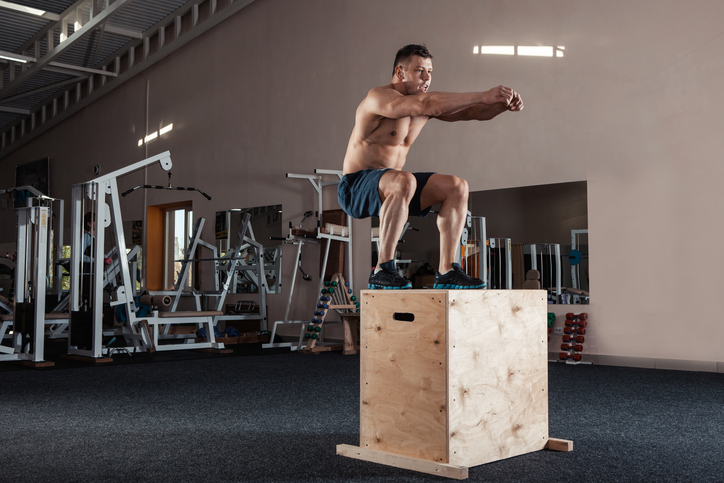Have you ever been to the gym or running track and seen people hopping on and off boxes or bounding around the place? It’s not just springy types that benefit from this type of training. Runners can too. Martin Yelling spoke to Tim Stevenson, a strength and conditioning specialist and the director of oneathlete, to hear more about plyometrics.
What are plyometrics?
Plyometrics are explosive exercises designed to develop strength, speed and conditioning. Effective plyometric exercises are all about teaching the body to produce power and contract quickly and forcefully through developing neuromuscular capacities and the elastic properties of muscle. They’re great for runners as they help you stay strong, can help improve your maximal oxygen uptake, and develop your running efficiency and economy. They’re especially effective for distances of 10K or under. Seb Coe was a big fan. There’s more to plyometrics than jumping about randomly. Building them into a rounded, appropriate and functional strength and conditioning plan is vital.
Start slow
A well structured and progressive approach to plyometrics is important if your training is going to be effective and safe. “I know what some folk, especially men, are like when presented with three levels of exercise,” says Tim. “Most will confidently opt for the most advanced level, and only go backwards if they hurt themselves. You must nail the technical aspects and perform the movements comfortably before moving on to the next stage.”
Practise posture
Postural control and correct alignment is the priority. It doesn’t matter how high you can jump if you can’t control your feet, knee and hip position. Feet should face forwards, knees inline with the second toe, and your lower back shouldn’t arch or be rounded underneath. You may need to improve your flexibility to create better positions. And don’t forget to use your glutes – they’re a powerhouse for plyometric training. Finally, jump on an appropriate surface like grass or gym floor. Concrete is not advised.
Here is a range of running plyometric drills to try. Choose three exercises at a time and do up to three sessions per week. Reps: 5–8. Sets: 1–4.
To begin with, focus on ensuring good alignment during the takeoff and landing. Try to land quietly so you absorb the force. Hold the bottom landing position for three seconds. Stand up and repeat. As you feel more confident, progress to spending as little time on the floor as possible, jumping as high and as fast as you can.
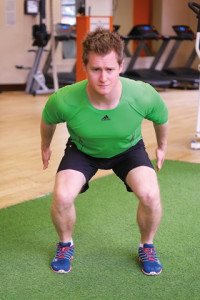
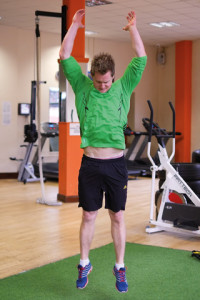
VERTICAL JUMP
The take off and landing position in the vertical jump will help you develop explosive leg power but also teach you to stabilise – both crucial elements in producing force and improving running economy. Practise getting your posture and alignment correct first with the vertical jump and then progress the intensity.
Squat down to a depth that feels comfortable, bringing your hands down to your side. When you reach the bottom position, powerfully straighten your legs and at the same time throw your hands upwards and overhead.
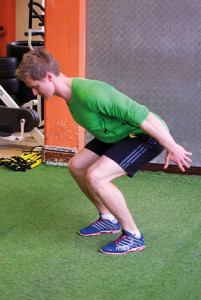
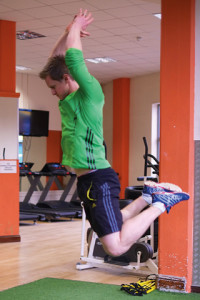
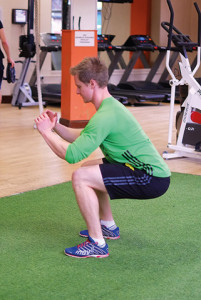
BROAD JUMP
The broad jump helps to train force production in a forward motion – ideal for runners. It’s a great opportunity to get the hips, knees and ankles into triple extension, along with encouraging good hamstring and hip-flexor motion in preparation for the landing.
Similar to the vertical jump, load into the squat position (knees bent, arms by sides). This time, jump forwards as far as you can. As you jump, try to bring your feet towards your backside and pull the knees through ready to land a squat position without falling over. Aim to maintain good form on landing.
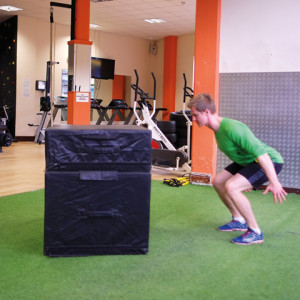

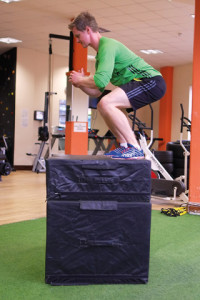
BOX JUMP
Giving yourself a target of the box to jump on can help you really squeeze out as much power as possible. More force production means faster times. If you start to push the box height, there is a real mental aspect to this exercise as well. You have to back yourself and commit.
Set up the box at an appropriate height and stand in front of it. Using the same technique as in the vertical jump, produce a powerful upward movement and pull your knees up and land on top of the box in a squat position. Levels 2 and 3 don’t apply for this exercise – simply jump higher.
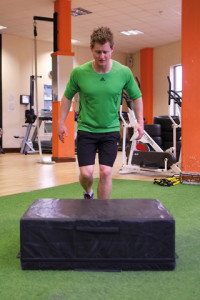
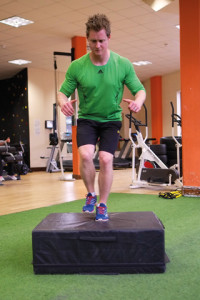
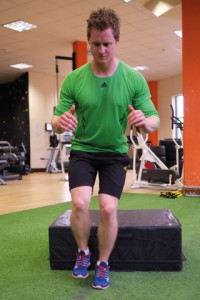
SINGLE-LEG BOX JUMP
This is a great exercise for developing single-leg force production. In addition, it will also help in improving your balance and lessening the chances of injury. Running is an unstable, single-leg exercise, after all.
Standing in front of an appropriately high box, hop up and land softly onto it. Remaining on a single leg, hop off and onto the floor. Postural control is very important, specifically knee alignment staying over the second toe at all times. Perform 5-8 reps on both legs, and increase the box height as you get more confident.
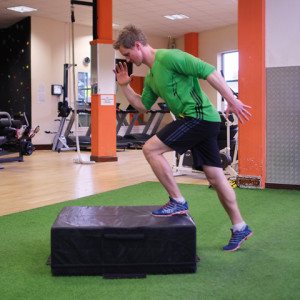
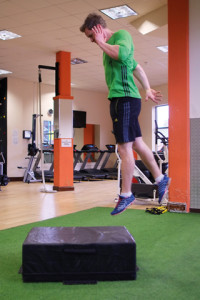
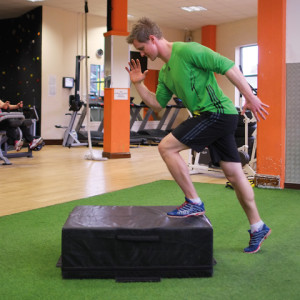
POWER BOX STEP-UP
This exercise allows you to isolate one leg at a time and really ramp up the power output. It also requires a certain amount of coordination, improving your overall athleticism.
Place one foot on a box and lean forward so your body weight is over your toes. Set your arms in a sprint position and drive the raised leg into the box, pushing your body upwards. Aim for as much height as possible. Let your rear leg hang in the air before landing on the same lead leg. Repeat on the same leg for the required number of repetitions, then change legs.
For more information on plyometrics, visit oneathlete.co.uk

